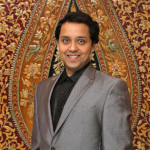
Aster Healthcare provides healthcare across all economic segments. While Medcare focuses on premium healthcare, Aster focuses on providing quality healthcare across the Middle East and India. What services do you provide to low-income populations in the UAE? What is your vision for Access? We have the huge advantage of having three verticals. Many of the healthcare players don’t have hospitals, clinics and pharmacies. We have all three. So that’s one. We also have three economic segments like you’ve said. So, what’s the difference between Medcare, Aster and Access? We say that it’s like going on a flight from Dubai to Delhi. Your beginning point and destination are the same. You come with an illness and you have to get it cured. But the way in which you get the service – like first class, business class and economy – that’s the way we look at these verticals. So, there will be a difference in the service being provided, ambience, service levels and settings. But ultimately, the treatment has to be the same. Sixty per cent of our total business comes from Dubai. So, we thought that this is the best place for us to experiment. If you look at overall business, Indian business is 13 per cent; GCC is 87 per cent. In that 87 per cent, I think 80 per cent will be Dubai. We thought there is a requirement for us to segregate healthcare services because the cost structures are different when you go to different levels. For example, in a company with 1,000 people, there will be about 50 people who are top executives; 250 people who are middle level executives; and the remaining 70 per cent are lower end blue collar workers and support staff. That is the population demographic in the UAE too. Moreover, Dubai is completely covered by insurance, like Abu Dhabi. A senior executive in a company would require Medcare-like care. That is what their company also wants. They can’t provide it for everybody. Then the middle segment will require normal healthcare services. And the Access vertical’s services are a little more stretched. You will have to come, wait. It won’t be as posh. This is also what the insurance companies, and the company want. On the basis of that, we created this economic segmentation of our services. How can the Access category of services be provided in India, where there is a high demand for affordable healthcare at the base of the pyramid? We think that there is a significant opportunity at the bottom of the pyramid in countries like India and in other GCC countries. The Aster brand in India is for the middle-income population. Below that, there is a huge segment which is the people who are now going into the Ayushman Bharat programme. We would like to look at that because that’s going to be a significant opportunity. We have not started clinics in India because there is no coverage for outpatients through the insurance system. Only the inpatient is covered. Once the outpatient gets covered, then the situation will change. We can have clinics like we have in UAE, and also hospitals. We have this in mind and are looking at a way in which we can be providers for the Ayushman Bharat by having a presence in the tier II and III cities as well as in the metros and tier I cities. We are strategising how we can go there and cater to the nearly 50 per cent of the population covered by the Ayushman Bharat.




































